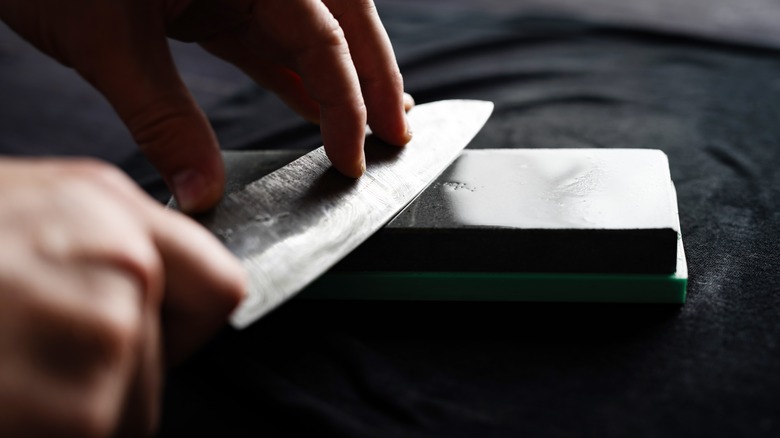Here's How To Tell Coarse From Fine On Your Sharpening Stone
A knife sharpening stone typically features two sides: one coarse and one fine, each serving a specific purpose in the sharpening process. The difference is all in the grit, which is basically the roughness or smoothness of the stone's surface. Most stones are conveniently labeled with a grit number, so that's your first clue. Coarse stones usually fall in the 100 to 1,000 grit range. These are the workhorses, perfect for when your blade needs some serious sharpening or if it's got chips that need smoothing out. If your blade's looking a bit rough, this is where you start.
On the flip side, fine sharpening stones are typically between 4,000 and 8,000 grit. The fine sharpening stones are what you use after you've done the heavy lifting with a coarse stone. Fine stones are all about honing and polishing, giving your blade that sharp, precise edge.
Now, if your stone doesn't have a grit number stamped on it, don't panic. You can still figure it out by touch and appearance. Coarse stones are rougher and might look more textured or grainy. When you run your fingers across it, you'll feel that roughness. Fine stones, on the other hand, have a smoother, almost glassy surface. A quick touch test can usually tell you whether you're dealing with a coarse or fine stone.
Using coarse and fine stones effectively
So, now that you know what you're working with, how do you use these stones to sharpen your dull kitchen knives? It's all about starting with the right stone for the job. If your knife is dull or has some damage, grab that coarse stone. You want to hold the blade at about a 15- to 20-degree angle (a good rule of thumb for most knives) and slide it across the stone with even pressure. The coarse stone's job is to remove metal quickly, reshaping the edge and getting rid of any nicks or chips. As mentioned, it's the heavy lifting part of sharpening.
Once you've done that, it's time to move on to the fine stone to refine the edges of the blade. The fine stone smooths out the rough edges left by the coarse stone, honing the blade to a sharp, polished finish. Use the same sweeping motion, but with lighter pressure. You're not trying to grind away metal here — you're perfecting the edge, getting it razor-sharp and ready for those precise cutting tasks. With the right equipment and a little practice, you'll have no trouble keeping your knives as sharp as the day you bought them.
With the right tools and a bit of practice, sharpening your knives becomes a breeze. Just remember to use both coarse and fine stones regularly, and your knives will stay as sharp as the day you bought them.
